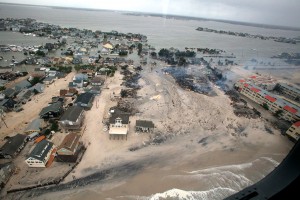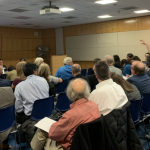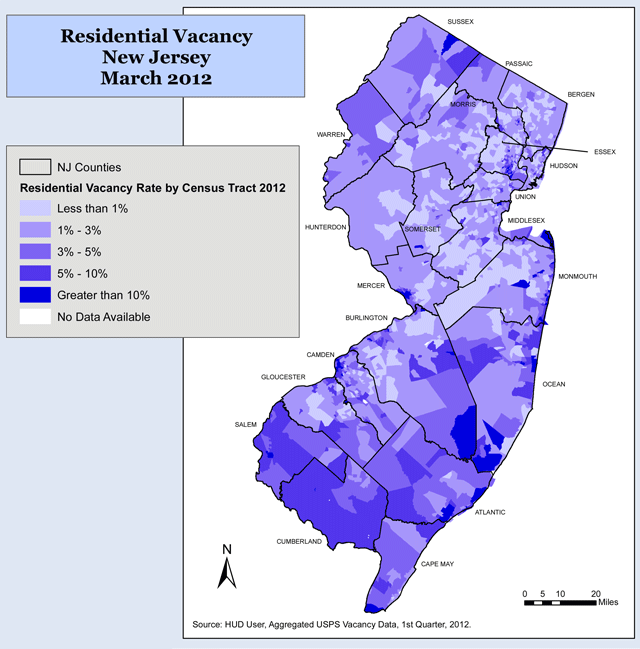New Jersey Future Blog
HUD Releases Notice for Second Round of Sandy Disaster Recovery Funding
November 13th, 2013 by Peter Kasabach
New HUD Sandy Funding Notice Focuses on Infrastructure and Requires Forward-Looking Risk Assessments, Including Considerations of Climate Change
 On Nov. 13 the U.S. Dept. of Housing and Urban Development (HUD) released its notice for states affected by Superstorm Sandy to apply for the next round of Community Development Block Grant Disaster Recovery (CDBG-DR) funds. Of the more than $5.1 billion being made available in this round, New Jersey is eligible for $1.4 billion.
On Nov. 13 the U.S. Dept. of Housing and Urban Development (HUD) released its notice for states affected by Superstorm Sandy to apply for the next round of Community Development Block Grant Disaster Recovery (CDBG-DR) funds. Of the more than $5.1 billion being made available in this round, New Jersey is eligible for $1.4 billion.The notice provides additional guidance and direction for the state to conduct science-based risk assessments that will be used to inform infrastructure investments, stating: “Each grantee must describe the science-based risk analysis it has or will employ to select, prioritize, implement, and maintain infrastructure projects or activities. At a minimum, the grantee’s analysis must consider a broad range of information and best available data, including forward-looking analyses of risks to infrastructure sectors from climate change and other hazards, such as the Northeast United States Regional Climate Trends and Scenarios from the U.S. National Climate Assessment, the Sea Level Rise Tool for Sandy Recovery, or comparable peer-reviewed information, as well as the regional analysis developed in Phase 2 of the Rebuild by Design competition.”
“We think that it is very important that the federal notice calls out the critical need to conduct risk assessments and even identifies the types of tools that are available for conducting these assessments,” said Chris Sturm, New Jersey Future’s state policy director. “It makes much more sense to understand the long-term risks before making long-term capital investments.”
There are several New Jersey-based tools, such as Rutgers University’s NJ Flood Mapper, that might also meet HUD’s risk-assessment tool requirements.
The notice also provided for additional transparency at two junctures. The first is a requirement for a 30-day public comment period following the Action Plan Amendment publication. The second requirement involves the selection of large infrastructure projects (referred to as “Covered Projects”). The notice states that the state must provide a “description of the transparent and inclusive processes that have been or will be used in the selection of a Covered Project(s), including accessible public hearings and other processes to advance the engagement of vulnerable populations. Grantees should demonstrate the sharing of decision criteria, the method of evaluating a project(s), and how all project stakeholders and interested parties were or are to be included to ensure transparency including, as appropriate, stakeholders and parties with an interest in environmental justice or accessibility.”
Finally, the notice highlights the importance of Local Disaster Recovery Managers and that their funding is an eligible and encouraged use of CDBG-DR funds. A “LDRM may coordinate and manage the overall long-term recovery and redevelopment of a community, which includes the local administration and leveraging of multiple federally-funded projects and programs. A LDRM may also ensure that federal funds are used properly, and can help local governments address the need for long-term recovery coordination,” per the description in the notice.
“We were very happy to see the Local Disaster Recovery Managers emphasized in this notice,” said Peter Kasabach, New Jersey Future’s executive director. “Many towns simply do not have the capacity to engage in recovery tasks and plan for future hazards that will keep their residents and businesses out of harm’s way.” New Jersey Future currently deploys four Local Disaster Recovery Managers in seven coastal communities.
















